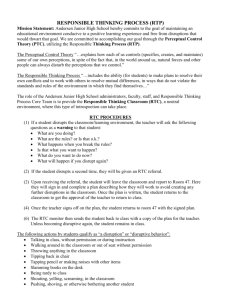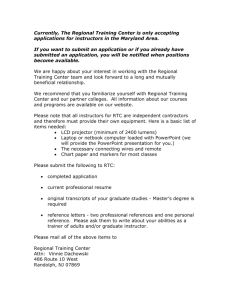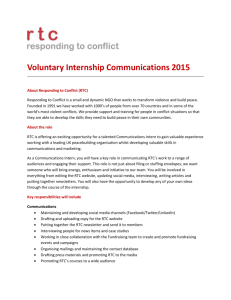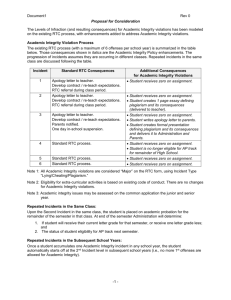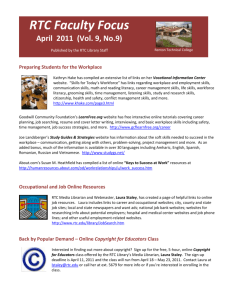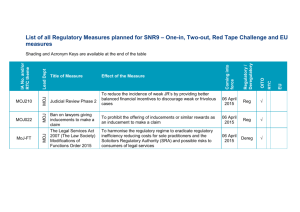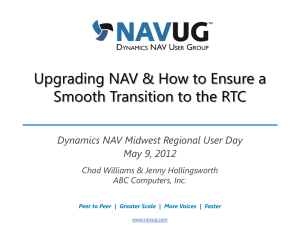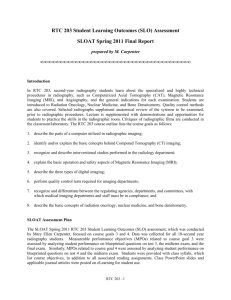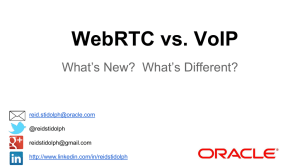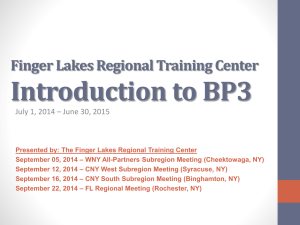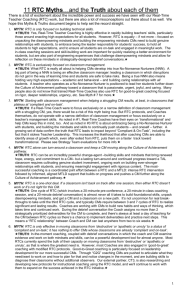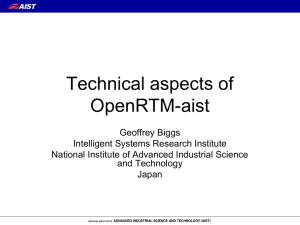Andy Thornton: What is the potential scope for real
advertisement
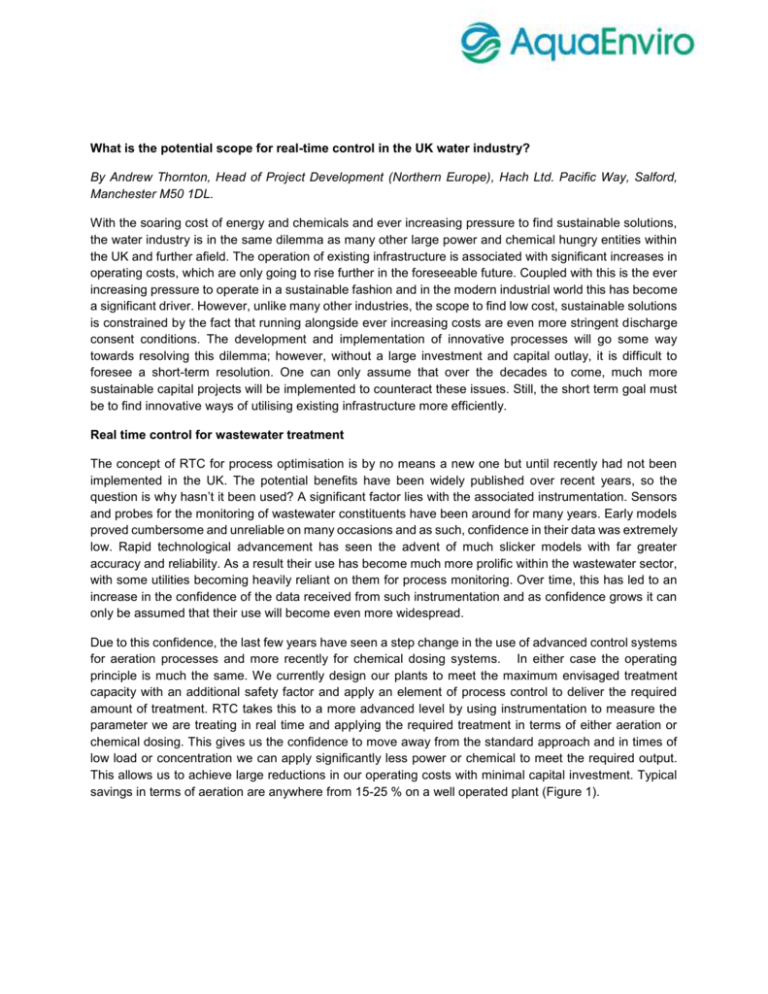
What is the potential scope for real-time control in the UK water industry? By Andrew Thornton, Head of Project Development (Northern Europe), Hach Ltd. Pacific Way, Salford, Manchester M50 1DL. With the soaring cost of energy and chemicals and ever increasing pressure to find sustainable solutions, the water industry is in the same dilemma as many other large power and chemical hungry entities within the UK and further afield. The operation of existing infrastructure is associated with significant increases in operating costs, which are only going to rise further in the foreseeable future. Coupled with this is the ever increasing pressure to operate in a sustainable fashion and in the modern industrial world this has become a significant driver. However, unlike many other industries, the scope to find low cost, sustainable solutions is constrained by the fact that running alongside ever increasing costs are even more stringent discharge consent conditions. The development and implementation of innovative processes will go some way towards resolving this dilemma; however, without a large investment and capital outlay, it is difficult to foresee a short-term resolution. One can only assume that over the decades to come, much more sustainable capital projects will be implemented to counteract these issues. Still, the short term goal must be to find innovative ways of utilising existing infrastructure more efficiently. Real time control for wastewater treatment The concept of RTC for process optimisation is by no means a new one but until recently had not been implemented in the UK. The potential benefits have been widely published over recent years, so the question is why hasn’t it been used? A significant factor lies with the associated instrumentation. Sensors and probes for the monitoring of wastewater constituents have been around for many years. Early models proved cumbersome and unreliable on many occasions and as such, confidence in their data was extremely low. Rapid technological advancement has seen the advent of much slicker models with far greater accuracy and reliability. As a result their use has become much more prolific within the wastewater sector, with some utilities becoming heavily reliant on them for process monitoring. Over time, this has led to an increase in the confidence of the data received from such instrumentation and as confidence grows it can only be assumed that their use will become even more widespread. Due to this confidence, the last few years have seen a step change in the use of advanced control systems for aeration processes and more recently for chemical dosing systems. In either case the operating principle is much the same. We currently design our plants to meet the maximum envisaged treatment capacity with an additional safety factor and apply an element of process control to deliver the required amount of treatment. RTC takes this to a more advanced level by using instrumentation to measure the parameter we are treating in real time and applying the required treatment in terms of either aeration or chemical dosing. This gives us the confidence to move away from the standard approach and in times of low load or concentration we can apply significantly less power or chemical to meet the required output. This allows us to achieve large reductions in our operating costs with minimal capital investment. Typical savings in terms of aeration are anywhere from 15-25 % on a well operated plant (Figure 1). 100 90 Aeration (m3/d) 100000 80 70 80000 60 60000 40000 Real time control (RTC) 50 Fixed aeration control 40 % Reduction in daily air usage 30 20 20000 Aeration Reduction (%) 120000 10 0 0 1 2 3 4 5 6 7 8 9 10 11 12 13 14 15 16 17 18 19 20 21 Day Figure 1 A comparison of aeration on 2 identical plants using RTC and conventional fixed DO control There are additional advantages to advanced process control other than that of reducing the annual operating costs of existing plant. The status quo in the UK is that “compliance is king” and more often than not process optimisation is seen to come with an element of consent failure risk. In reality nothing could be further from the truth. The fact that we are measuring and acting accordingly in real time ensures that we get increased process visibility and can react to abnormal conditions, which more often than not are the reason for failure. Furthermore, because we have the capability for tighter control, the implementation of RTC can often offset the requirement for civil upgrades in the case of tightening consents or population increase and there are a growing number of projects where this has been case. Where applicable, utilising RTC as opposed to plant extensions, we can reduce capital outlay by as much as 95% when compared to the conventional approach. Case Study: The following case study briefly outlines the potential. The plant under consideration was an MLE plant with 3 lanes configured to meet a total N consent of 15 mg/l (Figure 2). The new consent imposed was a Total N of 10 mg/l. The conventional approach would have been to upgrade the plant to a 4-Stage Bardenpho by constructing an additional post anoxic zone with methanol addition and a reaeration zone. The alternative RTC solution was to provide additional instrumentation (Figure 2), a model based nitrification controller and an internal recycle controller. The RTC solution was approximately 5% of the cost of the conventional solution. After considerable consideration the RTC solution was chosen and commissioned in AMP 5. As a result a large capital investment was avoided along with eliminating the requirement to dose supplemental carbon. In addition, the operating costs were reduced by 15 % due to the installation of the model based controller. This is an exceptional case but does outline the potential that advanced process control can offer. Figure 2 MLE process at site showing proposed extension to 4-Stage Bardenpho and RTC instrumentation. To date, the majority of installations have been for aeration control but there is currently an increase in advanced control of dosing chemicals such as iron and aluminium for phosphorus removal, methanol for denitrification and polymer for sludge thickening and dewatering. These processes have been used extensively throughout Europe and there are numerous case studies to validate this approach. Something that must always be considered when implementing RTC systems is asset condition, since this is the single most important factor when attempting to improve process performance with advanced control. Poor assets are more difficult to optimise and it is sometimes impossible for advanced control to make any significant difference at all. RTC always works best on well maintained and well operated plants and with post installation it is of paramount importance that the instrumentation put in place for the application of control is maintained and available, otherwise the plant will return to being operated in the much the way as it was before. There are numerous success stories for the implementation of RTC in the wastewater industry both in the UK and across Europe and it is the belief of many that we have barely scratched the surface with far more potential moving forward. However, we are a long way away from this approach becoming business as usual and we must take the right steps to ensure that we get the most out of our assets in the future. Andrew Thornton will chair a panel debate discussing this in more detail. The debate is titled ‘What is the potential scope for real-time control in the UK water industry’ with panel members: Simon Mazier of Perceptive Engineering; Oliver Grievson of Anglian Water; John Cannon of Southern Water; Ajay Nair of MWH; Anthony Kyriacou of Severn Trent Water and Ferran Ripoll of SISLtech-Aqualogy at Aqua Enviro’s European Waste Water Management Conference & Exhibition (EWWM) at 12th-13th October 2015, Manchester Town Hall, UK.
